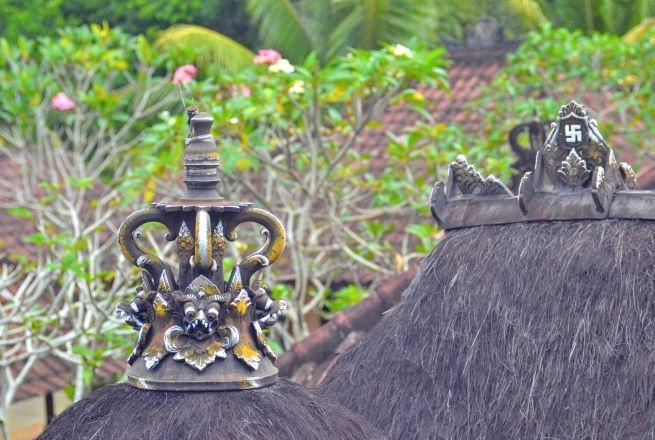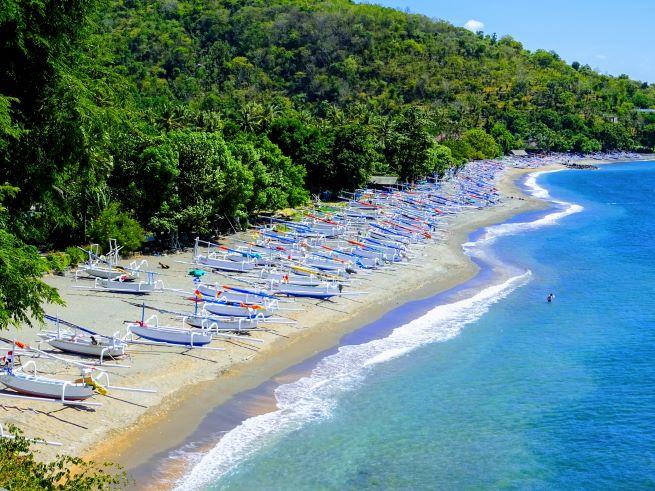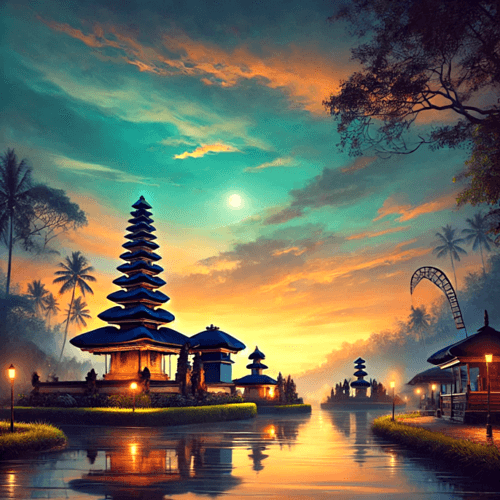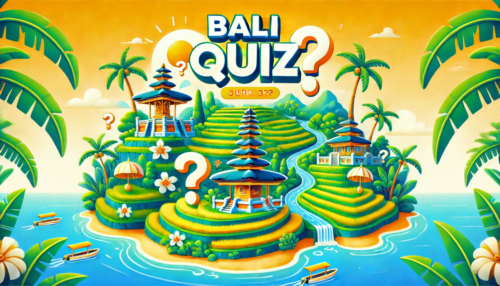Bali, one of Indonesia’s 17,000 islands, lies between the islands of Java and Lombok in the southeastern part of the country. It’s world-renowned for its unique blend of spirituality, nature, and cultural heritage. Though Indonesia is predominantly Muslim, Bali stands out as the only Hindu-majority island, making it one of the most culturally distinctive regions in the country. This diversity in religion and customs is reflected in the island’s daily life, from the many colorful ceremonies to its rich spiritual practices.
Often referred to as the “Island of the Gods,” Bali is revered not only for its breathtaking natural beauty—stunning rice terraces, active volcanoes, and pristine beaches—but also for its rich spiritual atmosphere. Temples dot the island, with offerings to the gods displayed at almost every corner. The blend of nature, culture, and spirituality makes Bali one of the most popular tourist destinations in Southeast Asia.
The Magic of Balinese Hinduism
The spiritual heart of Bali lies in its Hindu culture. Over 95% of the population practices a unique form of Hinduism, called Balinese Hinduism or Agama Hindu Dharma. This form of the religion incorporates Hindu beliefs, such as the Trimurti (the three gods Brahma, Vishnu, and Shiva) alongside local animist traditions. Brahma represents creation, Vishnu symbolizes protection, and Shiva is associated with both destruction and transformation.
In Balinese culture, the duality of existence is a key principle, often expressed through the balancing forces of creation and destruction. For example, the daily offerings, or canang sari, placed at doorways, temples, and even on the sidewalks, serve as a form of spiritual balance, thanking the gods while keeping negative forces at bay.
Rituals and offerings are a daily part of life. From small family shrines to grand temples like Besakih, offerings are made not only to the deities but also to ancestors. It’s believed that these ancestors return to watch over their families, providing protection and guidance.
- Swastika: symbolizes the universe and its movement
- Om: a sacred syllable that begins Hindu texts and mantras
The life of the local people is inseparably intertwined with religion. This is evidenced by the enormous number of temples on the island, reportedly over 100,000. Small shrines are also an essential part of every household. Balinese believe that the island is inhabited by supernatural beings and omnipresent gods and that their ancestors return to the places where they once lived to protect their families. Therefore, they worship the gods and the souls of deceased ancestors and make daily offerings, which they place on altars throughout the house and on the street in front of the house. Offerings usually consist of flowers, rice, sweets, or pieces of fruit, which are placed in small bowls made of palm leaves. Incense sticks, which are inserted into the offerings, are also an essential part, so that the gods can easily find them.

Bali’s Caste System and Social Structure
Despite Indonesia’s move away from formal caste systems, Bali retains subtle caste influences in everyday life. The traditional caste hierarchy, similar to that found in Hindu cultures, affects social interactions, language, and marriage. The island’s population is divided into four main castes: Brahmins (priests), Kshatriyas (warriors), Vaishyas (merchants), and Shudras (peasants).
Language itself adapts depending on whom you’re speaking with, particularly when addressing someone from a higher caste. While the system no longer dictates employment or rigid social roles, it still influences traditional customs and ceremonies.
What’s in a Name?
An interesting quirk of Balinese culture is the way children are named. Names follow a set order, with the firstborn typically named “Wayan” (meaning eldest), the second “Made” (middle), the third “Nyoman,” and the fourth “Ketut” (smallest). If a family has more than four children, the naming cycle starts over. This tradition is consistent across much of the population, making names a fun topic of conversation among visitors who quickly notice the repetition.
Natural Wonders of Bali
Volcanoes and Rice Terraces
Bali is home to majestic volcanoes like Mount Agung and Mount Batur, the latter of which is a popular destination for sunrise treks. These natural marvels offer incredible views and have cultural significance, with many temples located on or near their slopes.
The island’s famous rice terraces, particularly in Ubud and Jatiluwih, showcase Bali’s commitment to sustainable farming practices. These terraces, which follow the contours of the land, have been used for centuries and are a symbol of the Balinese people’s harmony with nature.
Beaches and Marine Life
Bali is famous for its stunning beaches, from the surfer’s paradise of Uluwatu to the serene shores of Amed, where diving and snorkeling reign supreme. The coral reefs around the island support a rich ecosystem, making it one of the best places in the world to explore underwater life. However, some areas, especially in the south, experience stronger currents, which visitors should be cautious of. Trash, especially after monsoon seasons, can sometimes be an issue, so checking the condition of a beach before visiting is advised.

Secret Spots
Hidden beaches like Nyang Nyang, untouched by heavy tourism, offer a peaceful escape. The lesser-known Pemuteran in the northwest is home to one of the world’s largest artificial reef projects and is ideal for those looking to avoid the busier tourist spots.

Things to Look Out For
- Weather and Monsoons: Bali has a tropical climate with a rainy season from November to March, which can affect travel plans and outdoor activities.
- Strong Currents: Beaches like Kuta and Nusa Dua can have powerful rip currents, especially during the wet season. Always heed local advice and swim in designated safe zones.
- Jellyfish: Jellyfish are present in some areas, especially during certain times of the year. Pay attention to any warnings on the beach.
- Waste Management: Bali is making strides in managing plastic waste, but it’s still a visible issue, especially on certain beaches during the rainy season when trash washes ashore. Participating in beach clean-ups or simply being mindful of your waste helps keep Bali clean.
Festivals and Celebrations
Bali hosts many unique festivals throughout the year, each tied to the Hindu-Balinese calendar. The Galungan and Kuningan festivals celebrate the victory of good over evil and are observed with ceremonies, processions, and offerings. During Nyepi, the Balinese New Year, the entire island goes quiet for a day of reflection and fasting. The day before, however, is anything but quiet—huge processions fill the streets, and large, demon-like effigies called ogoh-ogoh are paraded and then burned to ward off evil spirits.
Final Thoughts
Bali’s charm goes beyond its beaches, surf spots, and scenic landscapes. It’s a place where ancient traditions and modern tourism blend seamlessly. Whether you’re drawn by the temples, the warm and welcoming people, or the adventure sports, Bali offers something special for everyone. Take the time to immerse yourself in the island’s rich culture, and you’ll walk away with memories of more than just beautiful sunsets.






